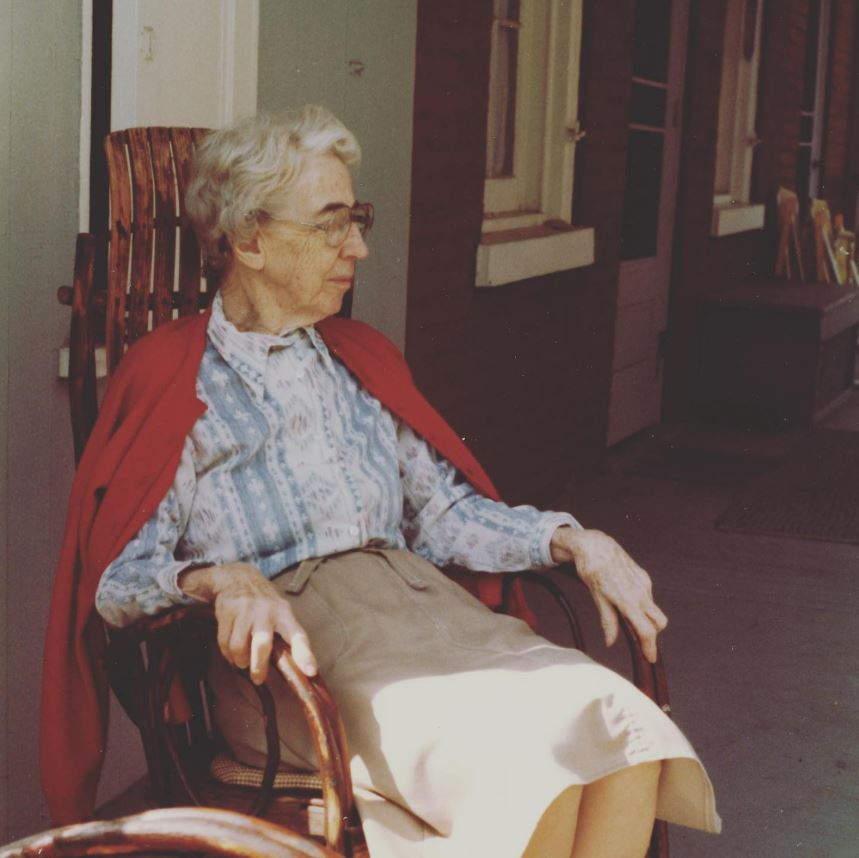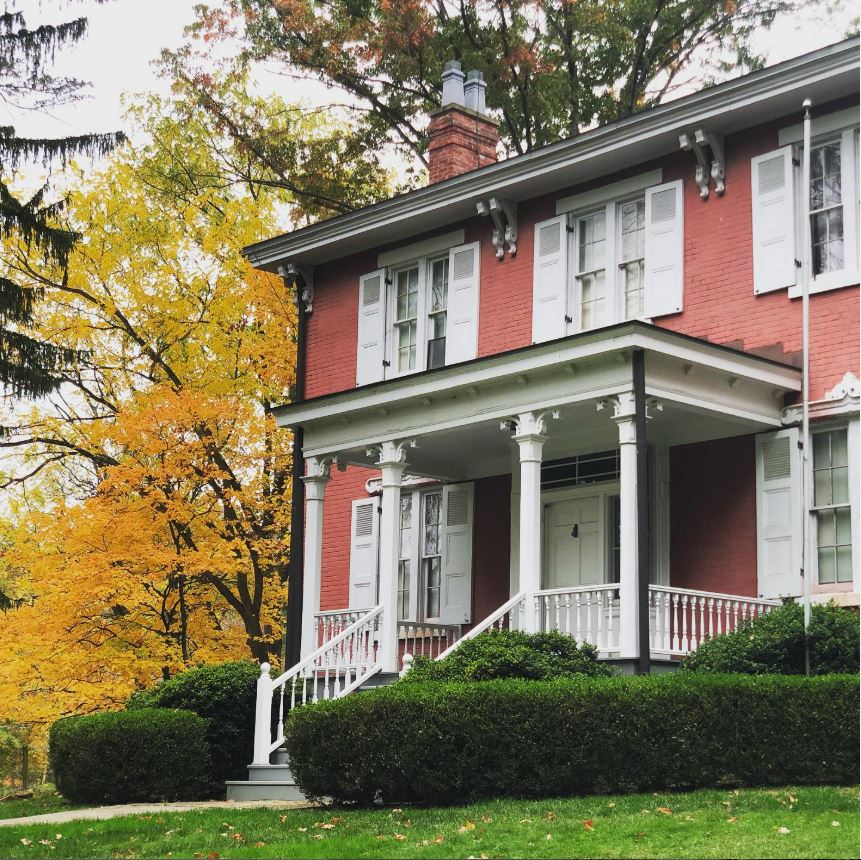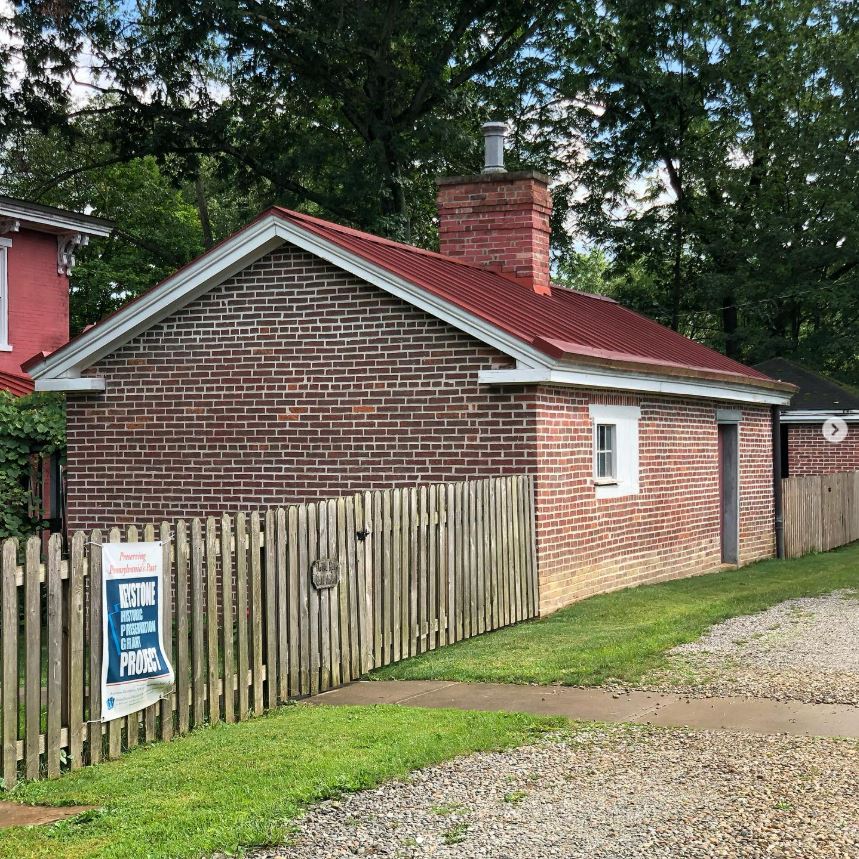One of the more rewarding parts of my job as the PA SHPO’s Community Preservation Coordinator for the Western Region is assisting non-profits, developers and municipalities understand and think through how historic buildings fit into economic development strategies and projects.
I was recently asked to provide some examples of projects that involved facilitating participation by several disparate entities that successfully integrated an historic resource into larger economic and community development strategies.
This project with the Historical Society of Upper Saint Clair (HSUSC) for Gilfillan Farm immediately came to mind and is a great example of how a little planning goes a long way.
A Bit about the Farm
Gilfillan Farm in Upper St. Clair Township, Allegheny County, is a 15-acre, 19th century working farm listed in the National Register of Historic Places (PA-SHARE Resource #1979RE00321). The Gilfillan Farm is owned and operated by the Historical Society of Upper Saint Clair (HSUSC) and is located in the midst of modern Pittsburgh South Hills suburban development.

Aerial view of Gilfillan Farm. Farmhouse is in upper right corner and bank barn in lower left. Photo from Gilfillan Farm Facebook page.
Gilfillan Farm includes about 15 buildings that make up a traditional 19th century farm, including a farm house, barns, and outbuildings. Most date to the mid- to late-19th century, when the farm included more than 500 acres.
The Gilfillan family lived at the farm from about 1857 to 2001, when Margaret Gilfillan passed away at 100. Margaret left the farm to HSUSC with instruction that they “shall utilize such property as an appropriate historical, cultural or educational center and landmark, reflecting in whole or in part the past usage of the property by the Gilfillan Family.”

Margaret Gilfillan on the back porch of the Gilfillan farmhouse. Photo from Gilfillan Farm Facebook page.
Today, Gilfillan Farm is interpreted as a working farm and is the last operational farm in the Upper St. Clair community. It is open to the community by appointment and for Upper St. Clair Community Day each May. Operation and management of the Farm is in part funded by a charitable trust left to the HSUSC by Gilfillan family descendants. In 2011, the trust was deemed in danger of being drained beyond recovery by the trust’s advisor.
At the request of the PA Attorney General’s Pittsburgh office, we facilitated a detailed analysis and report regarding the short- and long-term planning needs of the HSUSC and the Farm.
The HSUSC Board took the analysis to heart and undertook a series of organizational changes and restructuring of policies related to the Farm. Our guidance and assistance helped the Board find connections and a path where one had previously eluded them.

The Gilfillan Farmhouse. Photo from Gilfillan Farm Instagram account.
Here are a few examples of the progress HSUSC using the results of their planning work as a foundation for future work:
Value of A Site Management Plan
The Board utilized a Keystone Historic Preservation Planning grant to develop a comprehensive site management plan. The Site Management Plan included, among other things, architectural and landscape analyses and an organizational strategic planning initiative.
Data created by the architecture and landscape analyses, coupled with the action steps articulated in the site management plan, helped HSUSC expand their fund-raising footprint and created opportunities for funding and technical assistance heretofore unexplored by the organization.
The site management plan also made the organization’s application to Keystone Construction Grants more competitive, resulting in two construction grants in the past five years.

A Keystone Historic Preservation Construction Grant supported the restoration of the summer kitchen, which included replacing damaged brick, repointing the exterior, adding drainage, and installing discrete lighting. Image from Gilfillan Farm Instagram account.
Creative Partnership
Within the past two years, HSUSC has entered into a contract with Horses With Hope, an organization that uses trained horses to supplement therapy for those with physical, emotional and developmental challenges.
Horses With Hope activities are an appropriate use for the Gilfillan Farm and provides additional income while providing an exceptional experience for the staff and clientele of Horses With Hope.
Permanent Protection
HSUSC is also in conversation with the Western Pennsylvania Conservancy regarding the establishment of a permanent easement on the property. The WPC is one of the most successful, best organized and well-respected non-profit organizations in western Pennsylvania and the organization that owns, manages and interprets Fallingwater.
That the Gilfillan Farm and HSUSC has caught the attention of WPC is evidence of how successful their planning and resource development efforts have been.

The Pennsylvania bank barn at Gilfillan Farm. HSUSC used a Keystone Historic Preservation Construction Grant to install hidden drainage around the barn and restore the stone foundation, reducing or eliminating water and sentiment ran through the foundation walls and emptied into the lower level of the barn. Photo from https://gilfillanfarm.org/.
Secret to their Success
Gilfillan Farm’s success is due to the hard work and dedication of the HSUSC volunteer board and dedicated institutional partners. HSUSC takes advantage of the Farm’s newfound visibility and organizational capacity by hosting events whose income and participation far exceeds previous efforts.
Comment Policy
PHMC welcomes and encourages topic-related comments on this blog. PHMC reserves the right to remove comments that in PHMC’s discretion do not follow participation guidelines.
Commenters and Comments shall be related to the blog post topic and respectful of others who use this site.
Commenters and Comments shall not: use language that is offensive, inflammatory or provocative (this includes, but is not limited to, using profanity, obscene, or vulgar comments); disparage other commenters or people; condone illegal activity; identify the location of known or suspected archeological sites; post personal information in comments such as addresses, phone numbers, e-mail addresses or other contact details, which may relate to you or other individuals; impersonate or falsely claim to represent a person or an organization; make any commercial endorsement or promotion of any product, service or publication.
If you would like to comment on other topics not related to this blog post but related to PHMC, please fill out the PHMC Contact Us Form.

Wonderful that this farm is being saved and a great use for it! Soon the American Family Farm will be a thing of the past and just a tourist attraction. This is very sad. Too bad our country isn’t more focused on sustainability of our past.